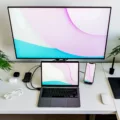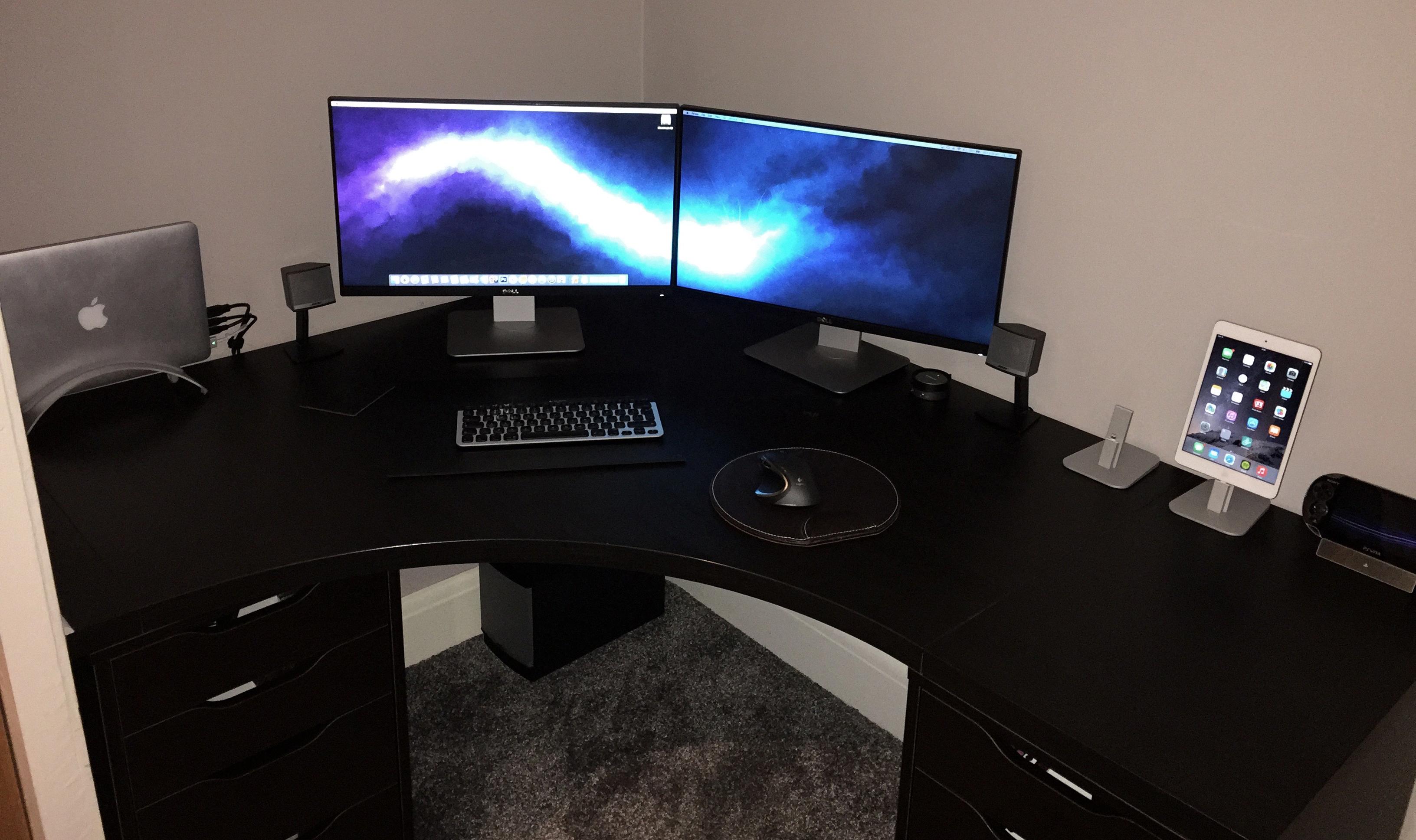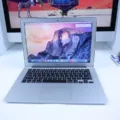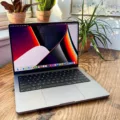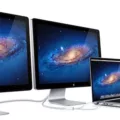Are you looking to expand your workspace with a Macbook Pro and multiple monitors? You’ve come to the right place! This blog post will go through the basics of what your Macbook Pro can handle, and all the options available to you.
When it comes to Macbook Pros, the number of external monitors you can use depends on the model you have. The Apple M1 processor series can support up to two external monitors, while the M1 Max processor series can support up to four external monitors. To see what your specific Macbook Pro model is capable of, check out Apple’s technical specifications for that product.
Connecting multiple monitors to your Macbook Pro is easy, but you will need the appropriate video cables and adapters. For Macbooks with Thunderbolt 4 (USB-C) and HDMI ports, up to four external displays can be connected depending on your Mac model. To connect two monitors to your MacBook Pro, you can use its HDMI, mini DisplayPort, or Thunderbolt (over USB-C) ports and connect them to your monitors with the proper video cables and adapters. Once everything is connected, your MacBook should automatically detect the external displays and give you more screens!
If you’re looking for an even larger workspace than what’s available on four displays, there are other solutions available as well. One option is using a USB-C dock that will allow you to plug in additional peripherals such as a keyboard or mouse as well as additional displays. You could also use a laptop stand along with an adjustable monitor arm so that multiple screens can be elevated and organized easily in one place.
No matter which solution works best for you, adding multiple monitors to your Macbook Pro setup will help increase productivity by giving you more space for multitasking or running multiple applications at once. With this knowledge in mind, choose wisely when selecting which cables and adapters work best for connecting your MacBook Pro with multiple displays.
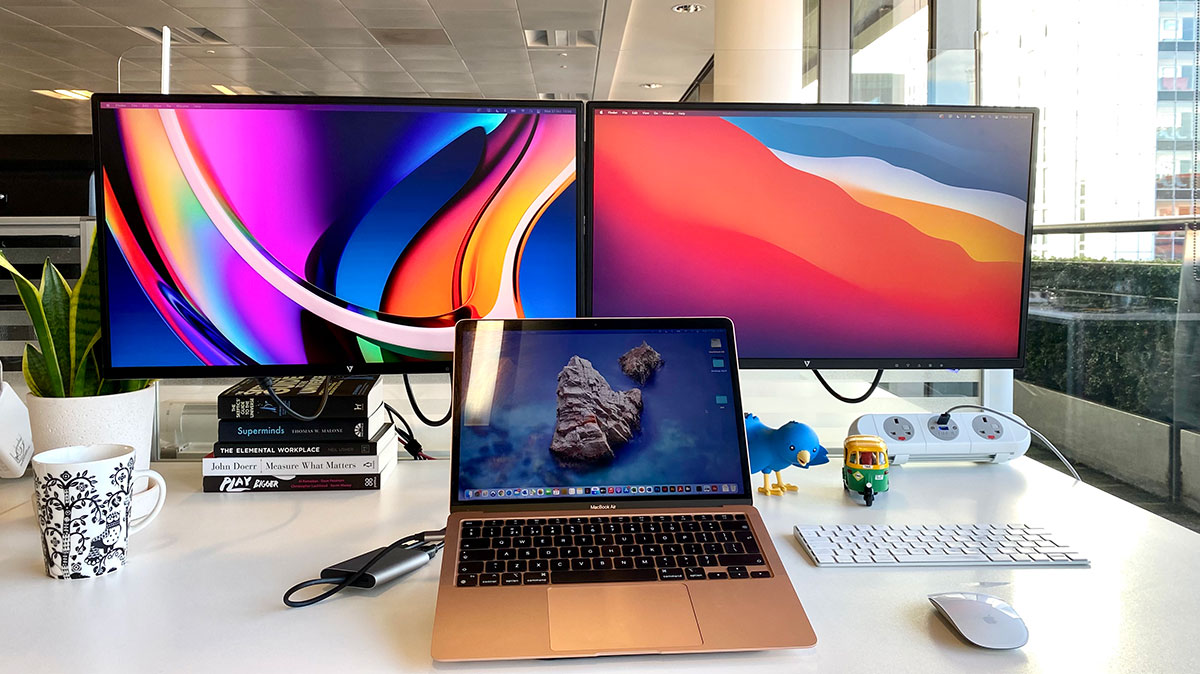
Can a MacBook Pro Support Three Monitors?
Yes, MacBook Pro models with Thunderbolt 4 (USB-C) ports can run up to three external displays. You will need a compatible USB-C hub or docking station that supports the connection of multiple monitors. You may also need an HDMI to USB-C adapter if your monitors do not have USB-C ports. Once your setup is complete, you should be able to configure the displays within macOS to arrange them however you like.
Using Two Monitors with a MacBook Pro
Yes, you can use two monitors with your MacBook Pro. To do so, you’ll need to connect your monitors to the HDMI, mini DisplayPort, or Thunderbolt (over USB-C) ports on your MacBook Pro. Depending on which type of port you’re using, you may need to purchase the appropriate cable and/or adapter. Once connected, your MacBook Pro should automatically detect and set up the monitors for extended desktop use.
Connecting Three Monitors to a MacBook Pro
Connecting three monitors to your MacBook Pro is a relatively easy process. First, you will need to invest in either a USB-C multiport adapter or a Thunderbolt 3 dock with multiple video output ports. Once you have the necessary hardware, plug in the adapter or dock into one of the available Thunderbolt 3 or USB-C ports on your MacBook Pro. Then connect the monitors to the adapter or dock using an appropriate video cable such as HDMI, DisplayPort, DVI, or VGA. Depending on the type of cable you are using, you may need to use an appropriate adapter for connecting your monitor. Once all cables are connected, power on your monitors and turn on your MacBook Pro. Your operating system should automatically detect the external displays and extend your desktop across all three screens.
Can Mac Computers Support Four Monitors?
Yes, Mac laptops with an Apple M1 Max processor can support up to four external monitors. This is noted in the technical specifications for the various Mac laptop models. To use multiple monitors, you will need to connect your Mac to the monitors using HDMI, Thunderbolt 3 (USB-C), or USB-C ports. You may also need to purchase additional cables and adapters depending on your setup. Once connected, you can configure your displays in System Preferences > Displays.
Can the M1 MacBook Pro Support Two Monitors?
Yes, the M1 MacBook Pro can support two external monitors. You can connect up to two external displays using the Thunderbolt 4 (USB-C) and HDMI ports. To ensure maximum compatibility, it is recommended that you use two identical monitors of the same resolution, refresh rate, and type. Additionally, you may need to configure your Mac’s display settings in order to optimize the appearance of each monitor.
Which MacBook Pro Models Support Dual External Monitors?
The 14-inch and 16-inch MacBook Pro models with the M1 Pro or M1 Max chips support dual external monitors. The M1 Pro chip supports up to two external displays, while the M1 Max chip can support up to four displays. To connect external monitors, users will need compatible USB-C capable displays, an appropriate USB-C to USB-C cable, or an appropriate USB-C to DisplayPort cable. Additionally, an appropriate power adapter may be needed depending on the display being used.
Connecting Two Monitors to a MacBook Pro M1
You can connect two monitors to your MacBook Pro M1 using a dual HDMI adapter. The adapter plugs into the Thunderbolt port of your M1 or M2 Mac and turns it into two HDMI ports that you can plug into two external displays. It’s an easy way to get more screen real estate for work, play, or multitasking. Additionally, some models of the Macbook Pro M1 come with ports that are compatible with other types of adapters such as VGA, mini DisplayPort, and DVI. You could use these types of adapters to connect additional monitors as well.
Maximum Number of Monitors Supported by MacBook Pro 13
The MacBook Pro 13 can support up to two external 4K displays with 4096-by-2304 resolution at 60Hz in millions of colors. Therefore, the MacBook Pro 13 can support a total of two monitors.
Impact of Using Multiple Monitors on Mac Performance
No, using multiple monitors on a Mac should not reduce performance. In fact, modern graphics cards are designed to be able to handle multiple monitor setups without any noticeable reduction in performance. This is because the graphics card can process multiple images at the same time, meaning that it can still render sharp images quickly and efficiently. Furthermore, many Mac computers feature dedicated GPUs (graphics processing units) which are even more powerful than traditional graphics cards, allowing them to handle dual monitor setups with ease.
Conclusion
In conclusion, the MacBook Pro is a reliable and powerful laptop for everyday computing tasks. It has a range of features that make it well-suited for professionals, such as long battery life, multiple ports, and high-definition displays. It also supports up to four external monitors if you have an M1 Max processor model. With its robust performance, the MacBook Pro is perfect for those who need a reliable and powerful laptop for their work or personal use.

